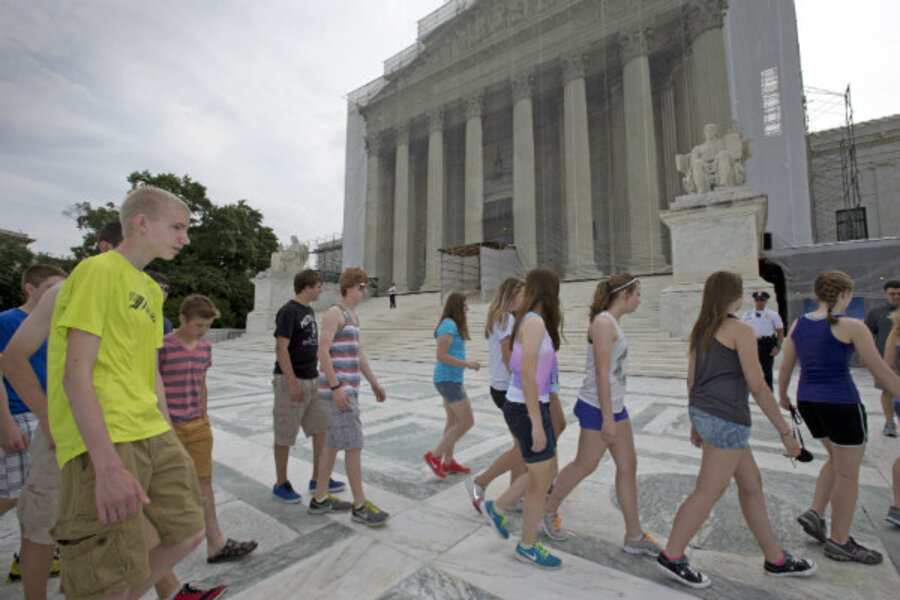Affirmative action on the way out with Supreme Court Texas ruling
Loading...
| Washington
If one thing was settled by the US Supreme Court, it is that Abigail Fisher is closer to getting back her application fee and non-refundable housing deposit from the University of Texas at Austin.
That $100 was a key part of her appeal to the High Court.
Oh, and the practice of racial set-asides in school admissions was dealt another severe blow.
Although the ruling didn’t completely shut the door on race-conscious admissions, it has moved America inexorably toward the day that Martin Luther King called for – a day when Americans would be judged by the content of their character rather than the color of their skin.
In its decision in Fisher v. University of Texas at Austin, justices voted 7–1 that the University of Texas’s race-based admissions policy must be reviewed at the highest level judicial review – “strict scrutiny.”
It sent the case back to the lower federal court to apply that standard to UT Austin – which apparently thought the days of “race conscious” policies had an open road based on a 2003 Supreme Court ruling, which in fact was quite a narrow decision.
Ms. Fisher, who is white and who applied to UT-Austin in 2008, sought redress because she said she was passed over in favor of a lesser-qualified minority candidate. Since she already enrolled at another school and graduated, she now wants the $100 she spent on what she feels was a discriminatory process.
Today’s ruling is quite significant. A 7-1 ruling requiring lower courts to apply “strict scrutiny” to university admissions policies even when done in the name of “diversity” will place significant limits on affirmative action. The strict scrutiny standard is a high burden for any state or federal policy to meet and invariably results in the policies being struck down by federal courts.
Going forward, public schools will have to engage in more “race-neutral” steps to achieve their goals. They will need to engage in greater recruitment activities and retention tools instead of relying on the shorthand of “targets” by race.
But the main take away from the court’s decision today in Fisher is that the days of race-based school admissions are coming to an end.
Immediately after the court’s term expires at the end of June, briefs will be filed in support of the 58 percent of Michigan voters who passed an amendment to the state Constitution in 2006 that prohibits race preferences in state-run colleges and universities. This fall, the justices will hear arguments in the case of Schuette v. Coalition to Defend Affirmative Action, ostensibly to see if the will of the people means anything anymore.
Fisher and the Schuette case could provide the one-two punch to finally throw racial preferences out of the ivory tower for good.
Horace Cooper, a former law professor at the George Mason University School of Law, is the co-chairman of the Project 21 black leadership network.





